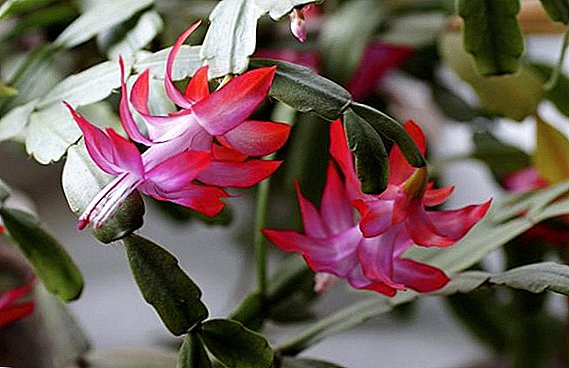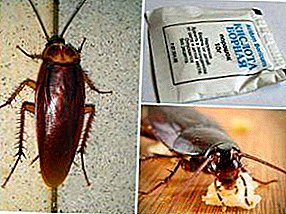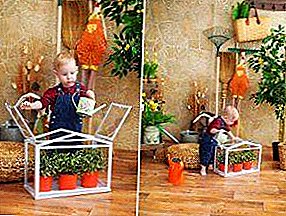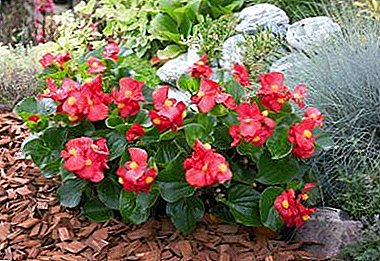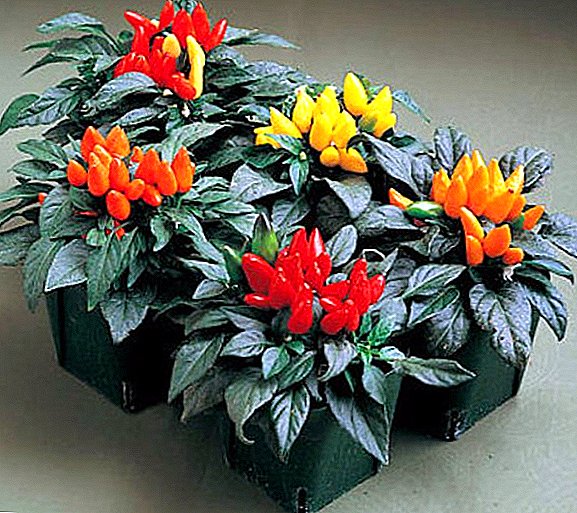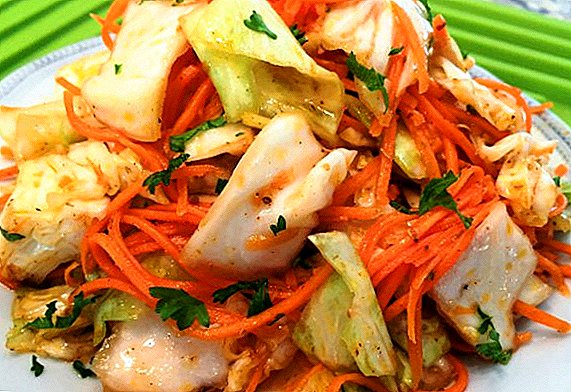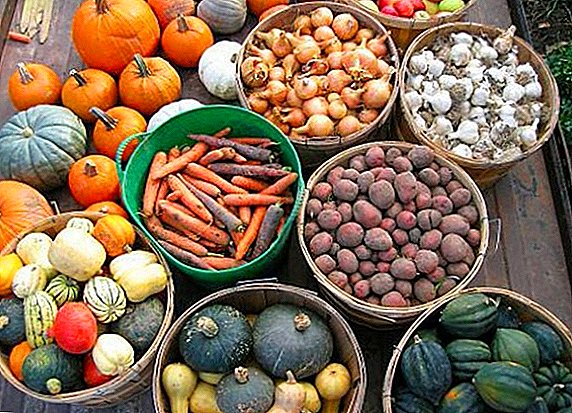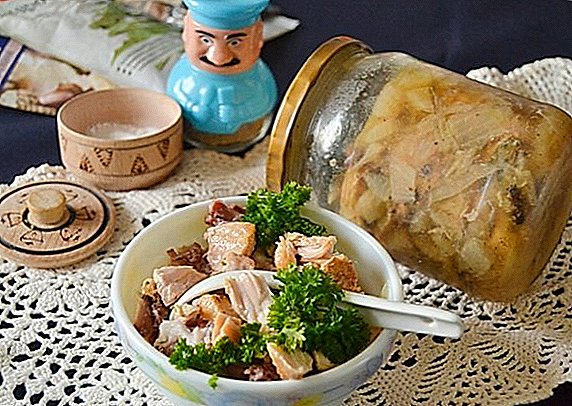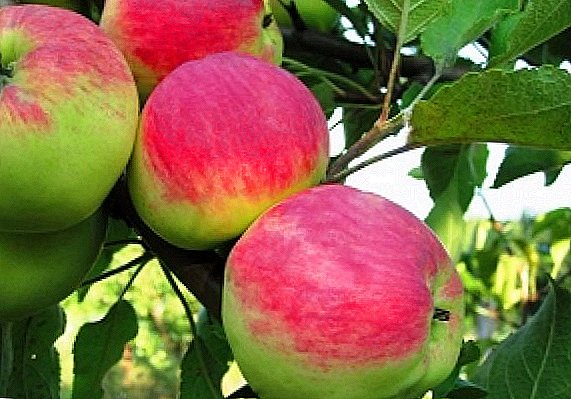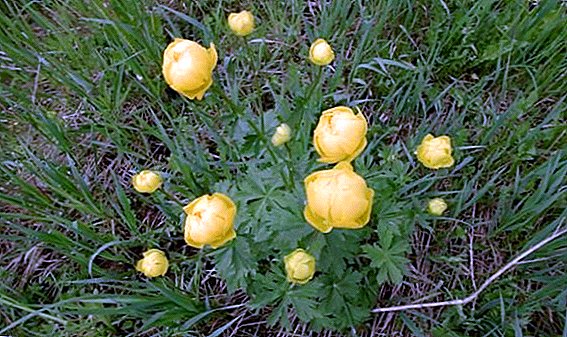 Bathhouse is known since ancient times as the strongest diuretic.
Bathhouse is known since ancient times as the strongest diuretic.
Healers of Kievan Rus treated the liver, the gastrointestinal tract with a potion from it, edemas and tumors were removed, various abscesses healed, and also used them for blood diseases.
The herb, in addition to its healing properties and attractive colors, is notorious for its poisonous roots.
In this article we will talk about the benefits and harms of the flower of the cup, the correctness of the collection of raw materials and its use in traditional medicine.
Did you know? Ancient legends tell about elves, who on July nights with a full moon cooked without fire the elixir of youth, using for this the golden vessels of spherical shape. They were put on poles, so that dew did not get into the drug. In the morning, the drink was bottled and carried away, leaving empty golden containers, which, under the influence of sunlight and the remnants of the magic elixir, turned into beautiful flowers.
Bathing suit: chemical composition
The bathing-ground is a perennial herb of the Buttercup family, which most often occurs in the wild, less commonly cultivated in gardens. In the people it is also called "frying", "night blindness" or "trollius".
The latter version is consonant with the Latin official name Trollius, which still does not have a single interpretation. Some scholars insist that the adverb is derived from the old Germanic word "ball", because the buds consist of round petals. Others say the bathing place is the beloved flower of the trolls. The Russian-language name "bathing" is associated with a wet plant of the plant.
In the area there are about 25 species of this culture. To a greater or lesser extent, they differ in external signs, but are identical in chemical composition. Like most buttercups, frying contains magnoflorin alkaloids. They are saturated underground and aboveground parts of the plant.
Scientists have discovered flavonoids and phenolcarboxylic acids in its leaves: n-coumaric, cypanic, ferulic. Orientin, carotene, xanthophyll, trollyxanthin are collected in flowers. Sapronins predominate in the roots, and in the grains - lipase enzymes and fatty oils. Moreover, many trace elements, vitamins, vitexin, choline and coumarins are found in the biomass of the swimsuit. 
Healing properties of bathing
Official medicine has not studied the healing features of this culture. Scientists are interested in its antitumor effect, but the mechanism of action of constituent substances has not been studied in practice.
Despite the information on the toxicity of the grass of the "flower of the trolls," folk eskulapas widely used decoctions and ointments from it for edema, furuncles, tumors, diseases of the liver and stomach, diarrhea. The tincture of the swimsuit has been used in the treatment of edema, menstrual disorders, scabies, epilepsy. Petal teas are prepared for the treatment of scurvy and gallbladder. From the leaves and stems, veterinarians prepare decoctions for the treatment of cow udder.
Herbalists warn of possible side effects that manifest severe damage to the central nervous systemTherefore, even in traditional medicine, the bathing suit is used with caution.
Important! Particularly poisonous are the roots of the bathing suit. They are used for medicinal purposes extremely rarely.
Collection, preparation and storage of medical raw materials
In the wild, you can find the "flower of trolls" on wet lawns near streams and rivers in areas with a temperate climate. Less commonly, the plant is found in damp forest glades. Some types of bathers significantly reduced the population, as a result of which they were included in the Red Book. For raw materials it is better to go in mid-July, when the plant enters the flowering phase. You can learn the healing herbs on large yellow or orange budsthat thickly cover the bush and spread around a pleasant aroma. The height of the bathing stalks in scientific sources of plant description varies from 20 to 100 cm.
Healing herbs often with tremendous healing potential combine health risks in case of improper collection, storage, preparation and dosage. Along with the bathing vessel, careful and extremely attentive, you should be with a yew berry, periwinkle, anemone, bath, buttercup, wild rosemary, marsh grass, dope grass, black cohosh, Indian onions, laconose, hellebore.
Such a difference is due to the conditions of growth of the culture. Its shoots are straight, slightly branched at the tops. Stem foliage of dark color with a glossy surface, finger-separated, on long petioles. Basal leaves collected in the outlet. Fruits are many. Roots - shortened black or dark brown.
The bathhouse is well known to residents of the European, Far Eastern and Siberian northern regions, where it grows in abundance. Experienced herbalists urge caution when harvesting raw materials. They advise him to go to places of intensive expansion of this culture.
But before you pick a medicinal herb, make sure that the plant you like clearly matches the frying description. Make sure that strangers are not accidentally picked up by strangers in the basket.
If earlier you did not have to collect this raw material, take with you someone who knows how the bathing bath looks. After all, the error is fraught with serious consequences. Such a medicine can, at best, provoke a strong poisoning in the body.
For the preparation of suitable stems, leaves, flowers. Treatment by roots due to their toxicity is avoided even by experienced healers. After collecting all the harvested parts spread on a sheet of cardboard or a rag of thick fabric to dry naturally. After the raw material is completely dry, it is placed in paper bags or boxes and sent to a well ventilated dry place.
Before cooking medicines from a bathing suit, check whether insects or rodents have got there, whether there is any foreign smell in the storage tank. Such blanks are strictly prohibited for further use.
Did you know? The grains of the Asian swimsuit came to Europe, thanks to the scientist and traveler Eric Laxman, who sent them a package for his colleague.

Use in traditional medicine: bathing treatment
Despite the risks associated with toxicity of frying, and the lack of assessment of its qualities by official medicine, there are many recipes for various diseases among the people. Often it is used to prepare products for the treatment of hemorrhoids, boils, scabies, scurvy, as well as to relieve swelling in heart disease and angina. Let us consider in more detail how to prepare medicine from herbs in each specific case.
With hemorrhoids
At home, these diseases are treated with baths and lotions. To prepare the broth, pour 1 cup of boiling water with 1 tablespoon of crushed dried flowers and boil the mixture over low heat for about 5 minutes. Then the broth is wrapped with a towel, and left to properly infused. An hour later, the drug can be drained and applied externally.
The components that make up the herb will relieve inflammation and swelling, which will facilitate the general condition of the patient. Such lotions or baths are recommended up to 3-4 times a day during the whole period of exacerbation of the disease. 
For boils to heal wounds
Boils and other festering wounds are popularly treated by applying fresh frying leaves. But if the disease happened in the winter, when you can’t get the right medicine, you can use infusion of dried raw materials.
For its preparation, 1 teaspoon of crushed dry leaves is poured with 1 cup of boiling water and infused for two hours. Then the drug must be filtered and applied to the boil. Make sure that the tincture is warm, otherwise the course of the disease will be aggravated. Tie a wound or boil. It is better to do similar manipulations for the night.
In cases where the disease has become acute, it is recommended to use bath ointment. Its components will relieve inflammation and contribute to the healing of wounds, as well as elongated pus from an abscess.
The ointment is made from fresh herbs, which are pre-steamed and ground as small as possible. The finished mass is combined with any fat in a 1: 1 ratio. To enhance the effect of the composition add 1 teaspoon of honey.
Did you know? Caucasian mistresses every spring sent to the gathering of the tops of the young shoots of the bathing vessel. In the dried form in the winter they are added to meat broths, and also used as spices to potato dishes.
With heart swelling
Diuretic teas from bathing vessels are effective in diseases of the cardiovascular system to relieve swelling.
To this end, 1 tablespoon of dry plants (the amount of fresh raw materials is doubled) is brewed in 350 ml of boiling water, infused for an hour and take a drink before meals twice a day, 2 tablespoons. If the puffiness is just beginning, you can reduce the dose to 1 tablespoon.
With angina pectoris
For the treatment of angina herbalists recommend infusion of 3 tablespoons of frying and 1 cup of boiling water. The mixture should stand for 3 hours, then it should be drained. Take the drug in a tablespoon three times a day, regardless of the meal.
With scurvy
Just one teaspoonful of dried flowers is enough for cooking medicine for scurvy. Raw materials pour a glass of boiling water and infuse the resulting mass for about an hour, then filter. Means for medicinal purposes taken orally 50 ml 4 times during the day. 
With scabies
Scabies and other dermatological illnesses traditional medicine advises to treat tincture of the bathing. This is the rare case when plant roots are used. They are crushed to get 1 tablespoon of raw materials, then pour 200 ml of boiling water, insist about 2 hours. Ready potion must be filtered. It is recommended to accept inside inside on 30 g 4 - 6 times a day, depending on a disease stage. To enhance the result, for better absorption of the drug, it is advised to drink oatmeal with honey after taking it.
Other recipes recommend further treatment of the affected skin with herbal decoction of a bathing vessel, the preparation of which we mentioned above.
Important! An overdose of medicinal products from a bathing vessel and inept preparation of a drug can lead to brain damage.
Contraindications
Since science has not proven the healing effect of a bathing vessel on the human body, there are contraindications for pregnant women, women during lactation, and children. As well as from such therapy is to refrain from allergies and people with individual intolerance to the components of the herb.
Remember about the negative effects of self-medication. Do not test for yourself what a bathing vessel is, poisonous or not. With the slightest deterioration of health, it is better to contact a qualified doctor for help, because you can hurt yourself with good intentions.


